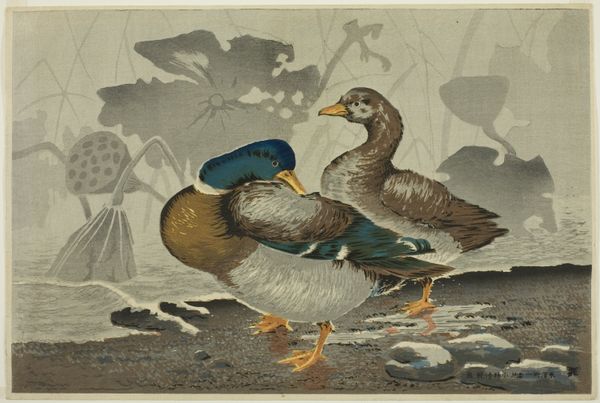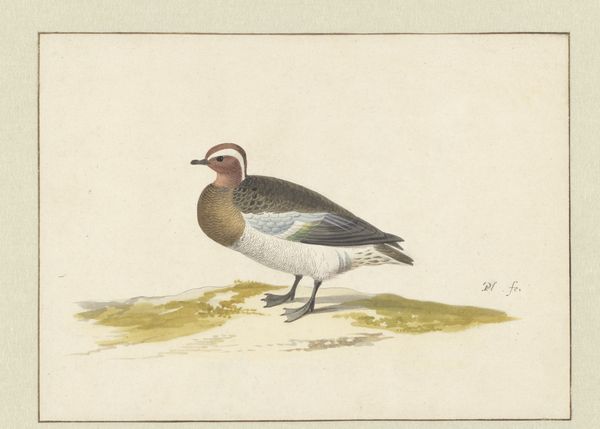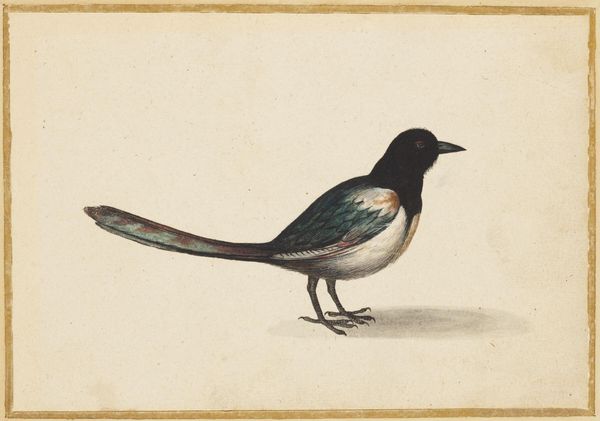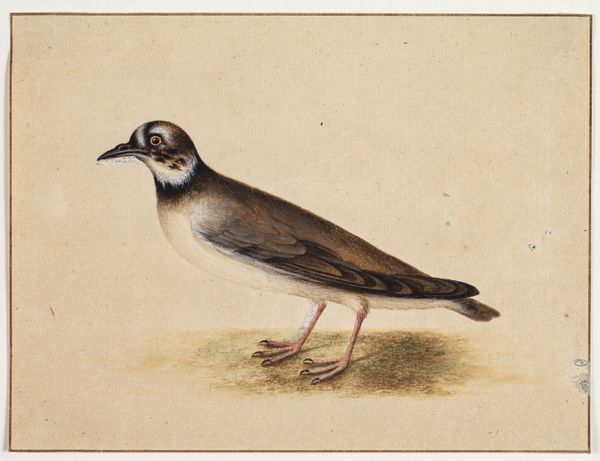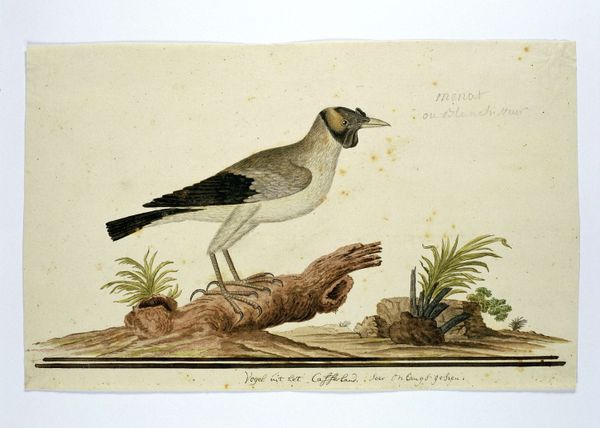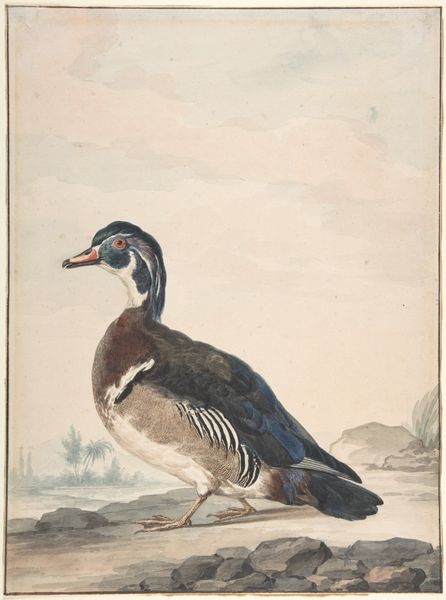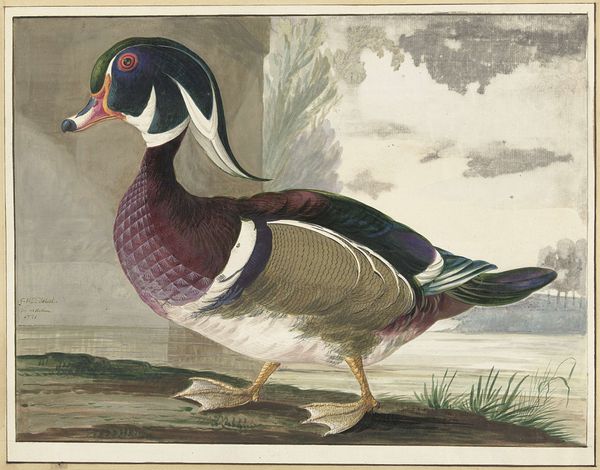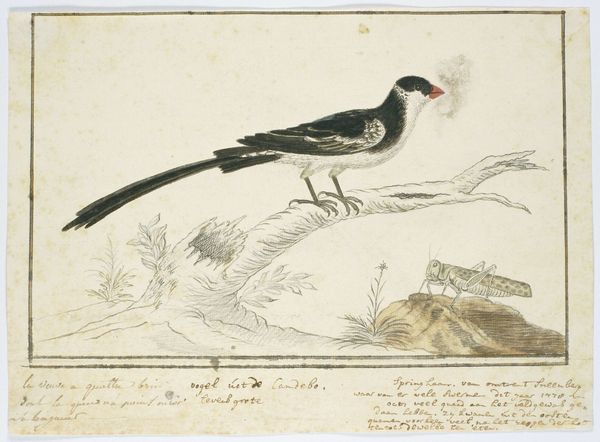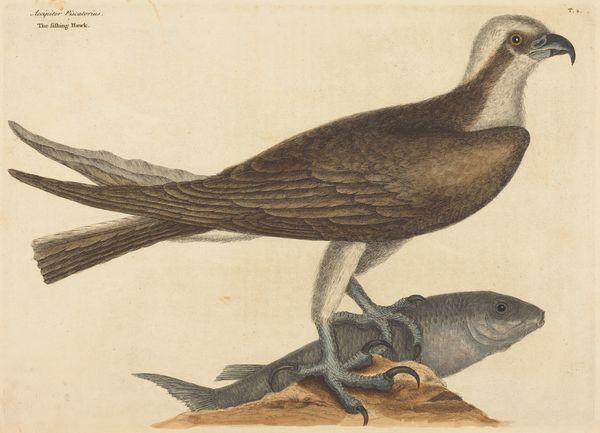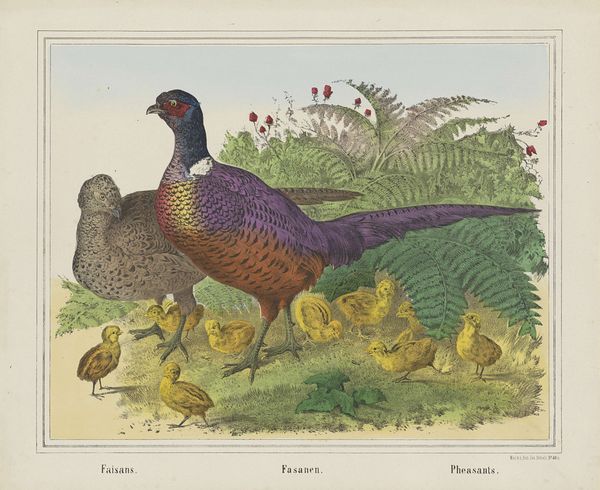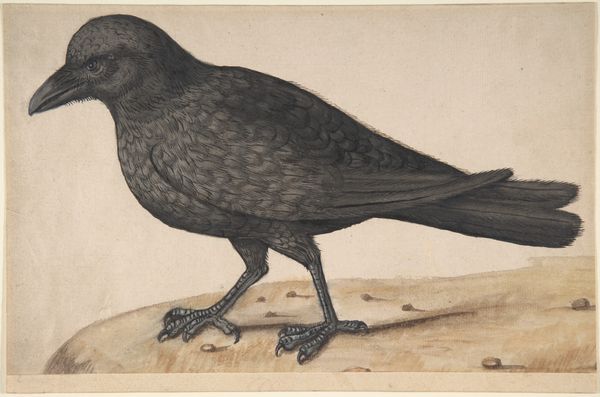
drawing, watercolor
#
drawing
#
landscape
#
watercolor
#
watercolour illustration
#
realism
Dimensions: sight size: 46.3 x 68.3 cm (18 1/4 x 26 7/8 in.)
Copyright: National Gallery of Art: CC0 1.0
Curator: Today, we're looking at John James Audubon's "English Black Cocks," a watercolor and drawing dating back to 1828. Editor: It has this subdued and gentle color palette that strikes me instantly. And these fowl…their textures are incredibly rendered. The plumage is so lifelike. There’s also something still, almost melancholic, about this depiction. Curator: Well, Audubon dedicated his life to documenting birds in their natural habitats, and he did this systematically, fueled by a then-burgeoning public interest in natural history. His work sits at the intersection of science, art, and also the socio-economic changes impacting America at the time, with westward expansion threatening numerous species. Editor: That context is key. It’s difficult to view an image like this without thinking about ecological destruction and the power dynamics implicit in observing and cataloging the natural world. Are we meant to appreciate these birds or see them as commodities? Also, is it really "English" if the birds appear to be painted within a North American landscape? What’s with the colonial gaze here? Curator: The “English” probably indicates a specific breed. Audubon was deeply invested in scientific accuracy but that ambition was inevitably influenced by the prevailing attitudes and methodologies of his time. Remember that he actually shot the birds himself to get the perfect pose and perspective to better draw their anatomy, which some found problematic back then, too. Editor: Problematic then, profoundly so now! I appreciate the anatomical detail, I do, but there's also something troubling about the idea of a man killing animals for the sake of documentation and display, especially when presented as objective science, isn't it? What does this tell us about the culture producing, consuming and benefiting from such images? Curator: Indeed, that paradox is embedded in the very act of capturing nature through art. And to Audubon's credit, the scale of his project and its sheer ambition was ultimately rooted in wanting people to be more attuned to biodiversity so people protect natural resources. Editor: And now, viewed through our modern lens, maybe Audubon’s work becomes more than just documentation. Maybe it is now a sort of memorial to a disappearing world and prompts reflections about human responsibility and how intertwined culture is with environmental changes. Curator: Precisely. And hopefully spurs ongoing conversations about our place within the natural world.
Comments
No comments
Be the first to comment and join the conversation on the ultimate creative platform.
